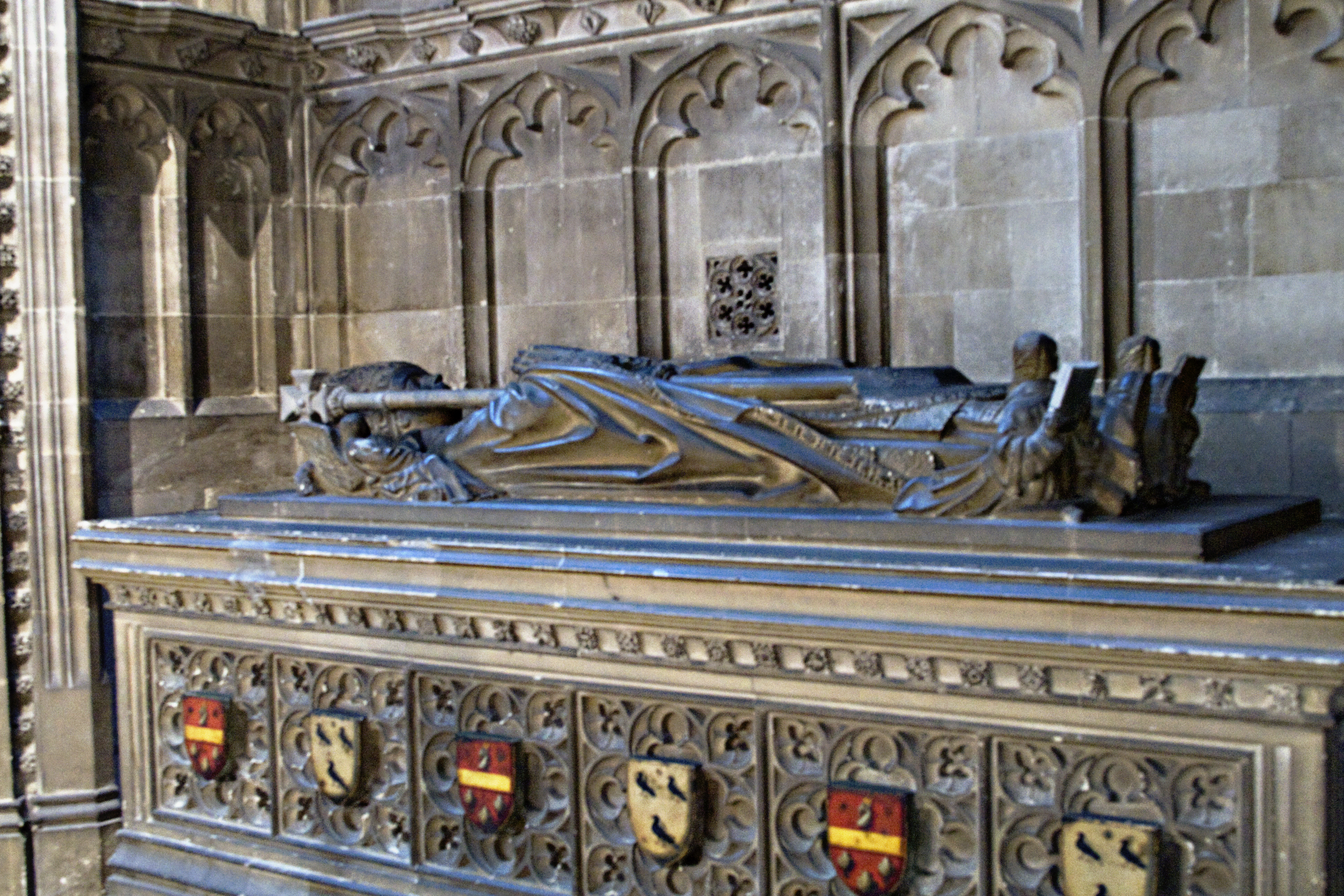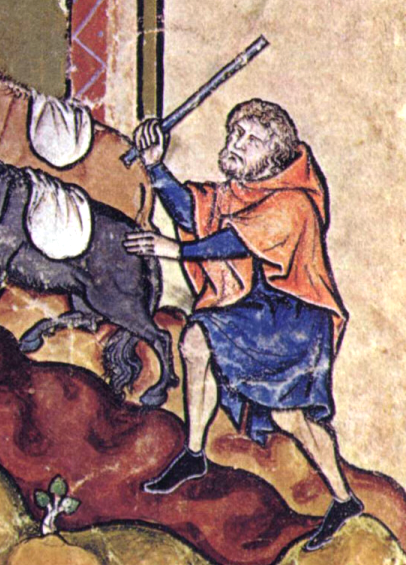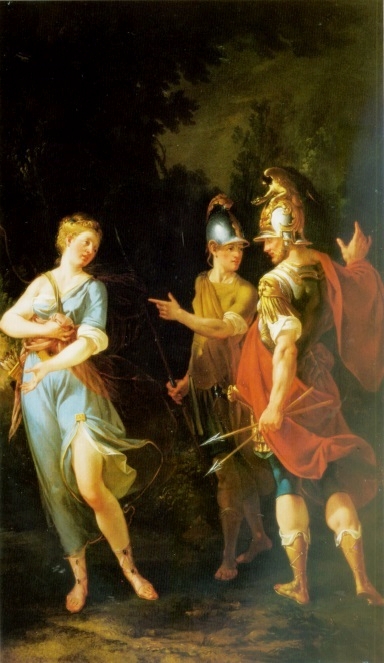|
Léal Souvenir
''Léal Souvenir'' (also known as ''Timotheus'' or ''Portrait of a Man'') is a small oil-on-oak panel portrait by the Early Netherlandish painter Jan van Eyck, dated 1432. The sitter has not been identified, but his highly individual features suggest a historical person rather than the hypothetical ideal usual at the time in northern Renaissance portraiture;Smith, 42 his slight and unassuming torso is contrasted with a sophisticated facial expression. His features have been described as "plain and rustic", yet thoughtful and inward-looking. A number of art historians, including Erwin Panofsky, have detected mournfulness in his expression. The sitter was apparently significant enough a member of the Burgundian duke Philip the Good's circle that his court painter portrayed him. The man sits before an imitation parapet with three sets of painted inscriptions, each rendered to look as if chiselled or scratched into stone.Panofsky, 80 Van Eyck did not have full command of eithe ... [...More Info...] [...Related Items...] OR: [Wikipedia] [Google] [Baidu] |
Jan Van Eyck - Léal Souvenir - National Gallery, London
Jan, JaN or JAN may refer to: Acronyms * Jackson, Mississippi (Amtrak station), US, Amtrak station code JAN * Jackson-Evers International Airport, Mississippi, US, IATA code * Jabhat al-Nusra (JaN), a Syrian militant group * Japanese Article Number, a barcode standard compatible with EAN * Japanese Accepted Name, a Japanese nonproprietary drug name * Job Accommodation Network, US, for people with disabilities * '' Joint Army-Navy'', US standards for electronic color codes, etc. * ''Journal of Advanced Nursing'' Personal name * Jan (name), male variant of ''John'', female shortened form of ''Janet'' and ''Janice'' * Jan (Persian name), Persian word meaning 'life', 'soul', 'dear'; also used as a name * Ran (surname), romanized from Mandarin as Jan in Wade–Giles * Ján, Slovak name Other uses * January, as an abbreviation for the first month of the year in the Gregorian calendar * Jan (cards), a term in some card games when a player loses without taking any tricks or scoring a m ... [...More Info...] [...Related Items...] OR: [Wikipedia] [Google] [Baidu] |
Portrait Painting
Portrait Painting is a Hierarchy of genres, genre in painting, where the intent is to represent a specific human subject. The term 'portrait painting' can also describe the actual painted portrait. Portraitists may create their work by commission, for public and private persons, or they may be inspired by admiration or affection for the subject. Portraits often serve as important state and family records, as well as remembrances. Historically, portrait paintings have primarily memorialized the rich and powerful. Over time, however, it became more common for middle-class patrons to commission portraits of their families and colleagues. Today, portrait paintings are still commissioned by governments, corporations, groups, clubs, and individuals. In addition to painting, portraits can also be made in other media such as Printmaking, prints (including etching and lithography), photography, video and digital media. It might seem obvious that a painted portrait is intended to achiev ... [...More Info...] [...Related Items...] OR: [Wikipedia] [Google] [Baidu] |
William Warham
William Warham ( – 22 August 1532) was the Archbishop of Canterbury from 1503 to his death. Early life and education Warham was the son of Robert Warham of Malshanger in Hampshire. He was educated at Winchester College and New College, Oxford. Legal career After graduating, Warham practised and taught law both in London and Oxford. His father was a tenant farmer, but his brother, Sir Hugh Warham, acquired an estate at Croydon, which passed to his daughter Agnes, who married Sir Anthony St Leger. Bishopric Later, Warham took holy orders, held two livings (Barley and Cottenham) and became Master of the Rolls in 1494. Henry VII found him a useful and clever diplomatist. He helped to arrange the marriage between Henry's son, Arthur, Prince of Wales, and Catherine of Aragon. He went to Scotland with Richard Foxe, then bishop of Durham, in 1497. He was partly responsible for several commercial and other treaties with Maximilian I, Holy Roman Emperor, also Count of Flanders and ... [...More Info...] [...Related Items...] OR: [Wikipedia] [Google] [Baidu] |
Hans Holbein The Younger
Hans Holbein the Younger ( , ; german: Hans Holbein der Jüngere; – between 7 October and 29 November 1543) was a German-Swiss painter and printmaker who worked in a Northern Renaissance style, and is considered one of the greatest portraitists of the 16th century. He also produced religious art, satire, and Reformation propaganda, and he made a significant contribution to the history of book design. He is called "the Younger" to distinguish him from his father Hans Holbein the Elder, an accomplished painter of the Late Gothic school. Holbein was born in Augsburg but worked mainly in Basel as a young artist. At first, he painted murals and religious works, and designed stained glass windows and illustrations for books from the printer Johann Froben. He also painted an occasional portrait, making his international mark with portraits of humanist Desiderius Erasmus of Rotterdam. When the Reformation reached Basel, Holbein worked for reformist clients while continuing t ... [...More Info...] [...Related Items...] OR: [Wikipedia] [Google] [Baidu] |
Rogier Van Der Weyden
Rogier van der Weyden () or Roger de la Pasture (1399 or 140018 June 1464) was an Early Netherlandish painting, early Netherlandish painter whose surviving works consist mainly of religious triptychs, altarpieces, and commissioned single and diptych portraits. He was highly successful in his lifetime; his paintings were exported to Italy and Spain, and he received commissions from, amongst others, Philip the Good, Netherlandish nobility, and foreign princes. By the latter half of the 15th century, he had eclipsed Jan van Eyck in popularity. However his fame lasted only until the 17th century, and largely due to changing taste, he was almost totally forgotten by the mid-18th century. His reputation was slowly rebuilt during the following 200 years; today he is known, with Robert Campin and van Eyck, as the third (by birth date) of the three great Early Flemish artists (''Vlaamse Primitieven'' or "Flemish Primitives"), and widely as the most influential Northern painter of the 15th ... [...More Info...] [...Related Items...] OR: [Wikipedia] [Google] [Baidu] |
Chaperon (headgear)
A chaperon ( or ; Middle French: ''chaperon'') was a form of hood or, later, highly versatile hat worn in all parts of Western Europe in the Middle Ages. Initially a utilitarian garment, it first grew a long partly decorative tail behind called a liripipe, and then developed into a complex, versatile and expensive headgear after what was originally the vertical opening for the face began to be used as a horizontal opening for the head. It was especially fashionable in mid-15th century Burgundy, before gradually falling out of fashion in the late 15th century and returning to its utilitarian status. It is the most commonly worn male headgear in Early Netherlandish painting, but its complicated construction is often misunderstood. Humble origins The chaperon began before 1200 as a hood with a short cape, put on by pulling over the head, or fastening at the front. The hood could be pulled off the head to hang behind, leaving the short cape round the neck and shoulders. The e ... [...More Info...] [...Related Items...] OR: [Wikipedia] [Google] [Baidu] |
Duchy Of Burgundy
The Duchy of Burgundy (; la, Ducatus Burgundiae; french: Duché de Bourgogne, ) emerged in the 9th century as one of the successors of the ancient Kingdom of the Burgundians, which after its conquest in 532 had formed a constituent part of the Frankish Empire. Upon the 9th-century partitions, the French remnants of the Burgundian kingdom were reduced to a ducal rank by King Robert II of France in 1004. Robert II's son and heir, King Henry I of France, inherited the duchy but ceded it to his younger brother Robert in 1032. Other portions had passed to the Imperial Kingdom of Burgundy-Arles, including the County of Burgundy (Franche-Comté). Robert became the ancestor of the ducal House of Burgundy, a cadet branch of the royal Capet dynasty, ruling over a territory that roughly conformed to the borders and territories of the modern region of Burgundy (Bourgogne). Upon the extinction of the Burgundian male line with the death of Duke Philip I in 1361, the duchy reverted ... [...More Info...] [...Related Items...] OR: [Wikipedia] [Google] [Baidu] |
Philip The Good
Philip III (french: Philippe le Bon; nl, Filips de Goede; 31 July 1396 – 15 June 1467) was Duke of Burgundy from 1419 until his death. He was a member of a cadet line of the Valois dynasty, to which all 15th-century kings of France belonged. During his reign, the Burgundian State reached the apex of its prosperity and prestige, and became a leading centre of the arts. Philip is known historically for his administrative reforms, his patronage of Flemish artists such as van Eyck and Franco-Flemish composers such as Gilles Binchois, and perhaps most significantly the seizure of Joan of Arc, whom Philip ransomed to the English after his soldiers captured her, resulting in her trial and eventual execution. In political affairs, he alternated between alliances with the English and the French in an attempt to improve his dynasty's powerbase. Additionally, as ruler of Flanders, Brabant, Limburg, Artois, Hainaut, Holland, Luxembourg, Zeeland, Friesland and Namur, he play ... [...More Info...] [...Related Items...] OR: [Wikipedia] [Google] [Baidu] |
Elisabeth Dhanens
Elisabeth Dhanens (1915 – 11 March 2014) was a Belgian art historian specialising in Early Netherlandish painting. Dhanens studied art history at Ghent University at the Higher Institute of Art, where she earned a Ph.D in 1945. Her dissertation was a monograph on the early-16th century artist , published in 1948.Dictionary of Art Historians Retrieved October 25, 2014. From 1945 to 1952 Dhanens was a researcher in at the , where she worked in the documentation laboratory. From ... [...More Info...] [...Related Items...] OR: [Wikipedia] [Google] [Baidu] |
Gravitas
''Gravitas'' () was one of the ancient Ancient Rome, Roman virtues that denoted "seriousness". It is also translated variously as weight, dignity, and importance and connotation, connotes restraint and moral rigor. It also conveys a sense of responsibility and commitment to the task. Along with ''pietas'' (regard for discipline and authority), ''severitas'', ''gloria'', ''simplicitas'' (lucidity), ''integritas'', ''Dignitas (Roman concept), dignitas'', and ''virtus'', gravitas was particularly appreciated as an ideal characteristic in leaders. ''Gravitas'' and ''virtus'' are considered more canonical virtues than the others. Roman concept ''Gravitas'' was one of the virtues that allowed citizens, particularly statesmen, to embody the concept of ''romanitas'', which denotes what it meant to be Roman and how Romans regarded themselves, eventually evolving into a national character. Many Roman philosophers praised ''constantia'' (perseverance, endurance, and courage), ''dignitas ... [...More Info...] [...Related Items...] OR: [Wikipedia] [Google] [Baidu] |
Funerary Art
Funerary art is any work of art forming, or placed in, a repository for the remains of the dead. The term encompasses a wide variety of forms, including cenotaphs ("empty tombs"), tomb-like monuments which do not contain human remains, and communal memorials to the dead, such as war memorials, which may or may not contain remains, and a range of prehistoric megalithic constructs. Funerary art may serve many cultural functions. It can play a role in burial rites, serve as an article for use by the dead in the afterlife, and celebrate the life and accomplishments of the dead, whether as part of kinship-centred practices of ancestor veneration or as a publicly directed dynastic display. It can also function as a reminder of the mortality of humankind, as an expression of cultural values and roles, and help to propitiate the spirits of the dead, maintaining their benevolence and preventing their unwelcome intrusion into the lives of the living. The deposit of objects with an appar ... [...More Info...] [...Related Items...] OR: [Wikipedia] [Google] [Baidu] |
201005151356 NE CSM Pancuius
1 (one, unit, unity) is a number representing a single or the only entity. 1 is also a numerical digit and represents a single unit of counting or measurement. For example, a line segment of ''unit length'' is a line segment of length 1. In conventions of sign where zero is considered neither positive nor negative, 1 is the first and smallest positive integer. It is also sometimes considered the first of the infinite sequence of natural numbers, followed by 2, although by other definitions 1 is the second natural number, following 0. The fundamental mathematical property of 1 is to be a multiplicative identity, meaning that any number multiplied by 1 equals the same number. Most if not all properties of 1 can be deduced from this. In advanced mathematics, a multiplicative identity is often denoted 1, even if it is not a number. 1 is by convention not considered a prime number; this was not universally accepted until the mid-20th century. Additionally, 1 is th ... [...More Info...] [...Related Items...] OR: [Wikipedia] [Google] [Baidu] |




.jpg)



